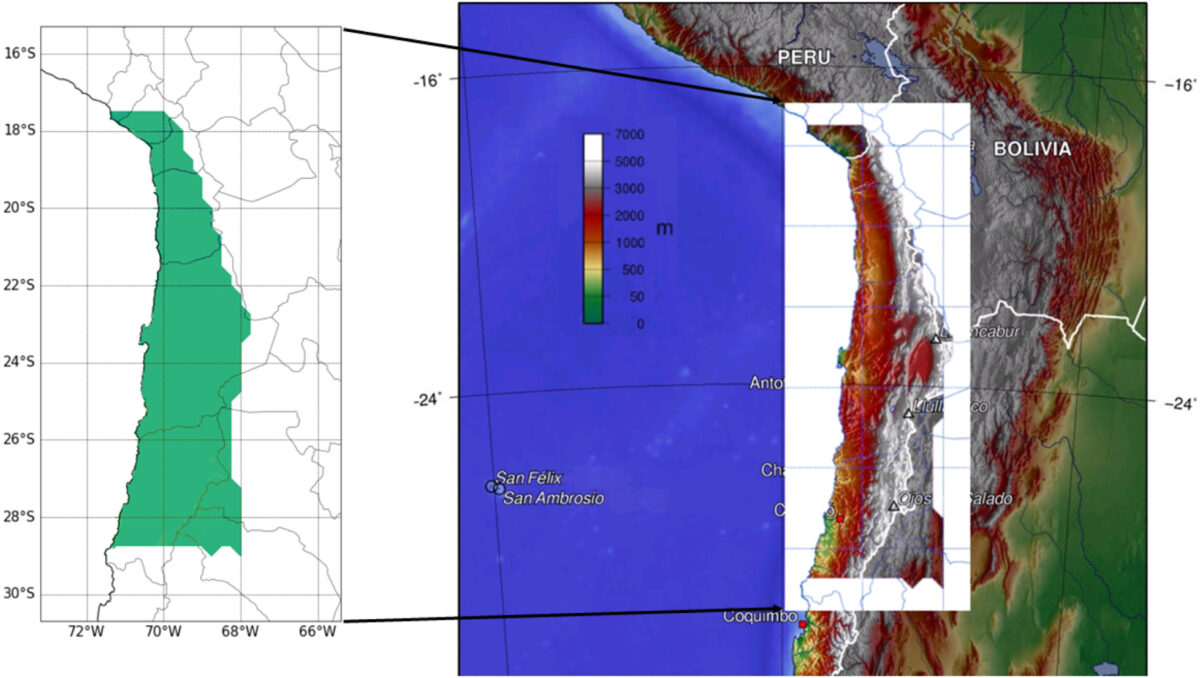A group of scientists from the Universidade de Vigo in Spain have sought to predict possible future variations in the solar photovoltaic power resource in the Atacama Desert in northern Chile, the world's region with the highest solar radiation levels, during the period 2021–2060.
In the study “Photovoltaic power resource at the Atacama Desert under climate change,” published in Renewable Energy, the researchers explained that the Atacama Desert, which is also called “the solar Eldorado,” is one of the driest places in the world and one of the few where annual irradiance exceeds 2,500 kWh/m2.
Not by accident, the region has become Chile's and Latin America's largest solar energy hub, with dozens of large scale utility solar plants having come online there during the past decade, the latest of which – a 180 MW PV facility linked to 112 MWh of storage – was announced this week by US energy company AES Corporation. “Atacama has exceptional conditions for producing solar power, and effectively, the solar power installed capacity in this region represents 92.9% of the total installed capacity in Chile,” the Spanish group said.
Its work seeks to assess, for the first time, if this huge potential for PV deployment may be negatively affected by the effects of climate change. The group's analysis considered, in particular, how changes in surface air temperature (TAS) and surface wind velocity (sfcWind) may combine with modifications in the surface-downwelling shortwave radiation (RSDS). The latter is an important component of the Earth's surface radiation balance.
The academics used a set of regional climate models (RCMs) to analyze which factors drive changes in PV power generation under two pathway emissions scenarios, which they called RCP2.6 and RCP8.5. “Factors such as the impact of aerosols and dust that could deposit on solar panels are not evaluated, as they are not resolved by climate change models, are beyond the scope of this work,” they specified.
They compared the simulated RSDS, TAS, and sfcWinds data for the period 2021–2060 with those obtained for the period 1980–2015 and found these data are in “good agreement,” although the models were found not to be able to represent the values of scfWind correctly.
“The projected changes in TAS show an increase for the two periods and two scenarios and cause a decrease in the projected photovoltaic solar power resource per square meter,” they also stated. “We obtain an average reduction of 1.23% in photovoltaic solar power resource per square meter under the RCP2.6 for the near future and 0.52% for the mid-term. Under the RCP8.5, the reduction is even higher, with values of 1.53% for the near future and 0.77% for the mid-term.”
The Spanish team stressed that, although climate change has the potential to impact solar power generation in the Atacama region, the desert will still retain exceptional conditions for solar power production.
This content is protected by copyright and may not be reused. If you want to cooperate with us and would like to reuse some of our content, please contact: editors@pv-magazine.com.




1 comment
By submitting this form you agree to pv magazine using your data for the purposes of publishing your comment.
Your personal data will only be disclosed or otherwise transmitted to third parties for the purposes of spam filtering or if this is necessary for technical maintenance of the website. Any other transfer to third parties will not take place unless this is justified on the basis of applicable data protection regulations or if pv magazine is legally obliged to do so.
You may revoke this consent at any time with effect for the future, in which case your personal data will be deleted immediately. Otherwise, your data will be deleted if pv magazine has processed your request or the purpose of data storage is fulfilled.
Further information on data privacy can be found in our Data Protection Policy.